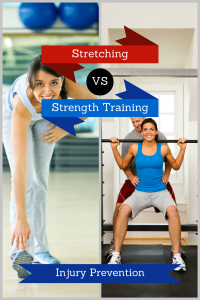
Ask the Docs
Stretch vs Strength: The Surprising Results in Sports Injury Prevention
By Dr. Jonathon Chung, Keystone Chiropractic
See the video! https://youtu.be/qwa0tQ2QgHc
The prevailing thought process in little leagues, pee wee football, and high school sports have generally placed a high priority on stretching to reduce injury amongst their athletes. The idea has gone mostly unchallenged by youth sports coaches in the name of “it just makes sense” and “that’s what my coaches have always taught me”.
Truthfully, we didn’t have much reason to doubt that stretching is beneficial for injury prevention. By common knowledge, it did make sense given that stretching will usually leave you feeling good, and it seemed to make sense that having looser muscles would be more advantageous than being tight.
However, with the age of the internet and the virtual freedom of information, we now have better resources to make decisions using research and data from people who study this stuff all of the time. That’s when I stumbled upon this article on Twitter last week.
The article basically took a look at 25 large scale studies that compared the rates of sport-related injury in strength Training, functional exercise programs, and stretching. For most people, the results are pretty surprising:
- Strength training and proprioceptive exercise (what most consider functional training) consistently provided a protective effect against injury
- Stretching programs showed no effect
- The Authors estimate that strength training would reduce sports injury rates by 1/3 and reduce overuse injuries by 1/2
What Does That Mean For My Athletes?
This doesn’t mean that stretching has no benefits what so ever. There is still some evidence that stretching may help with some types of muscle strains. Additionally, flexibility and good range of motion have been well documented as markers of overall health and longevity, especially as we age. If you want a good run down of how to apply stretching in effective ways, I wrote about it a few months ago in my article: Stretching: You’re Doing it Wrong.
The big idea is to de-mythify the idea that lifting weights is bad for the body and leads to injury, when the fact is that stronger muscles are what allows the body to be more resilient!
Of course this doesn’t mean it will make your body bulletproof. Stuff happens, especially in the world of contact sports, where injury for all intents and purposes, is inevitable. We have limited control over our environment, and we have even less control when bad luck happens on the playing field.
What we do have control over is how strong we make our bodies.
“While other professions are concerned with changing the environment to suit the weakened body,chiropractic is concerned with strengthening the body to suit the environment.” – Dr. B.J Palmer
While his quote has nothing to do with exercise, or strength training, Dr. Palmer’s words echo the fundamental philosophy that we have towards patient care. If we can’t change the environment that the body faces day after day, than it’s up to us to make the body more resilient to the environment.
Who Can Benefit the Most?
Athletes of the big sports (football, basketball, baseball) usually have a strength and conditioning program built into their training, so as long as they’re getting good coaching, it’s not really something that needs to be addressed. Most of the time, these programs have dedicated strength coaches, and spend a huge amount of time in the off season in the weight room.
A lot of the smaller sports that don’t get as much attention make up a bulk of the total athletes in the country. Sports like soccer, cross country running, swimming, water polo, gymnastics, cheerleading, lacrosse are sports played by millions of boys and girls around the country.
These sports generally do not get the knowledge resources from high level strength and conditioning coaches. They also have limited time and money resources to work on a strength training program to supplement their regular practice schedules. Generally speaking, these athletes basically spend time practicing their sport day after day. Soccer coaches spend time playing soccer. Cheerleaders practice their routines. Swimmers swim, and cross country runners run This problem is especially prevalent for girls, who have the most to gain from strength training.
If you really want to make a difference for your young athlete, from a performance AND injury prevention stand point, it may be time to ditch the pre-practice stretch, and start looking for a gym and trainer to help them get to the next level. Plus, if they start learning good habits now, they’ll have a better chance of maintaining their weight lifting habits as adults.
Did you like this article? Feel free to share it with the people you care about and see if a Complimentary Consultation is the next step to regain their health.
Dr. Chung is a practicing Structural Chiropractor in the West Palm Beach area. He has been published in peer reviewed scientific journals and is a sought after speaker in health and wellness. Follow his blog at http://chiropractorwellington.com/category/keystone-chiropractic-blog/ or find him on twitter at @drjonathanchung


